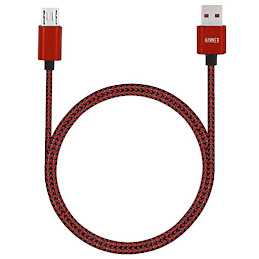How to make a microphone form earphones: Step-by-Step Guide to Creating a Wireless Mic from Earphones
If you're looking to transform your regular earphones into a wireless microphone, you're in luck! This step-by-step guide will walk you through the process of converting your earphones into a wireless microphone, allowing you to enjoy the freedom of wireless audio recording or amplification. With a few simple tools and some basic technical knowledge, you can easily create your very own wireless microphone setup.
Step 1: Gather the Required Materials:
To begin, collect the necessary materials for this DIY project:
Earphones with a built-in microphone: Choose a pair of earphones that have a built-in microphone. These earphones will serve as the foundation for your wireless microphone.
Bluetooth Transmitter: Purchase a Bluetooth transmitter that supports audio input. This device will be responsible for transmitting the audio from your earphones to a receiver wirelessly.
Receiver: Acquire a Bluetooth receiver that is compatible with your recording device or amplifier. This receiver will receive the wireless audio signal from the Bluetooth transmitter.
3.5mm Audio Cables: Obtain a pair of 3.5mm audio cables. One cable will connect the Bluetooth transmitter to your earphones, while the other will connect the Bluetooth receiver to your recording device or amplifier.
USB Charging Cable: Ensure you have a USB charging cable to power the Bluetooth transmitter.
Step 2: Connecting the Components:
Follow these steps to connect the components:
Plug one end of the 3.5mm audio cable into the earphone jack of the Bluetooth transmitter and the other end into the earphone jack of your earphones.
Connect one end of the second 3.5mm audio cable to the audio output port of the Bluetooth receiver and the other end to the audio input port of your recording device or amplifier.
Use the USB charging cable to connect the Bluetooth transmitter to a power source or a USB port for charging.
Step 3: Pairing and Testing:
Now it's time to pair and test your wireless microphone setup:
Turn on the Bluetooth transmitter and put it into pairing mode according to its instructions.
Enable the Bluetooth function on your recording device or amplifier and put it into pairing mode.
Once the Bluetooth transmitter and receiver are paired, you should hear audio from your earphones when speaking into the built-in microphone.
Adjust the volume levels on your recording device or amplifier to ensure optimal audio quality.
Step 4: Fine-tuning and Troubleshooting:
If you encounter any issues or want to optimize the performance of your wireless microphone setup, consider the following tips:Maintain a reasonable distance between the Bluetooth transmitter and receiver to ensure a stable connection.
Check the battery life of the Bluetooth transmitter and receiver to ensure uninterrupted operation.
Experiment with different positions and orientations of the components to minimize interference and maximize signal strength.
Verify that all connections are secure and cables are functioning correctly.
Conclusion:
By following this step-by-step guide, you can successfully create a wireless microphone using your earphones. This DIY project allows you to enjoy the convenience and flexibility of wireless audio recording or amplification. Remember to always exercise caution when working with electronic components and follow safety guidelines. With your homemade wireless microphone, you can unleash your creativity and explore new possibilities in audio recording or performance applications.
In conclusion, transforming your earphones into a wireless microphone is a rewarding and cost-effective DIY project. By following the step-by-step guide provided in this article, you can create a wireless microphone setup that offers convenience and flexibility for various audio recording or amplification needs.
Through the strategic combination of a Bluetooth transmitter, receiver, and a pair of earphones with a built-in microphone, you can enjoy the freedom of wireless audio transmission. This opens up opportunities for hands-free recording, presentations, performances, podcasting, and more.
Remember to consider the quality of the components you choose, ensuring compatibility and reliability for optimal performance. Take into account factors such as Bluetooth range, battery life, and audio quality to ensure a seamless wireless experience.
Once your wireless microphone setup is complete, don't forget to test and fine-tune the system to achieve the desired audio quality. Adjust volume levels, experiment with positioning, and troubleshoot any connectivity or interference issues that may arise.
It's important to note that while this DIY wireless microphone setup can provide satisfactory results for casual use, it may not match the performance of professional-grade wireless microphone systems. If you require high-quality audio for critical applications, consider investing in dedicated wireless microphone equipment.
By embarking on this DIY project, you not only gain a functional wireless microphone but also acquire valuable knowledge and experience in electronics and audio engineering. Enjoy the convenience and versatility of your homemade wireless microphone as you explore new possibilities in audio recording and amplification.









Post a Comment